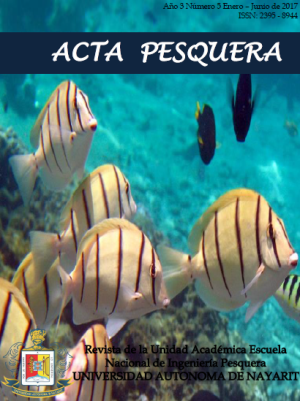Food resource partitioning among five dominant fish species in the Los Frailes reef, south-western Gulf of California, Mexico
Palabras clave:
Gulf of California, diet, reef fish, trophic interactions, rocky reef, trophic overlapResumen
Partitioning of the food resources among five dominant fish species in the Los Frailes reef, Baja California Sur, Mexico: Arothron meleagris (Tetraodontidae), Stegastes rectifraenum (Pomacentridae), Thalassoma lucasanum (Labridae), Acanthurus triostegus and Prionorus punctatus (Acanthuridae) was investigated. Stomach contents were analyzed and quantified using the index of relative importance (IRI), diet width was calculated with Levin´s index, and trophic overlap was calculated with the Morisita-Horn index. A total of 94 benthic food items were identified, which consisted mainly of algae (green, red, brown), crustaceans and molluscs. P. punctatus (n= 85) and A. triostegus (n= 50) can be categorized as herbivores, while A. meleagris (n= 101), S. rectifraenum (n= 50) and T. lucasanum (n=246) can be categorized as omnivores. The diet breadth index (Bi) as well as the overlap index (Cλ) indicated that the five analyzed species had a specialized trophic behavior (Bi= <0.6) and low trophic overlap (Cλ= ≤ 0.1). Based on these results, we conclude that each species has a preference for particular food components, a narrow diet width, and that there is low trophic overlap among them, which allows them to coexist on the reef in high numerical abundances and with minimal interspecific competition for food.
Descargas
Publicado
Número
Sección
Licencia
Derechos de autor 2023 Acta Pesquera

Esta obra está bajo una licencia internacional Creative Commons Atribución-NoComercial 4.0.





